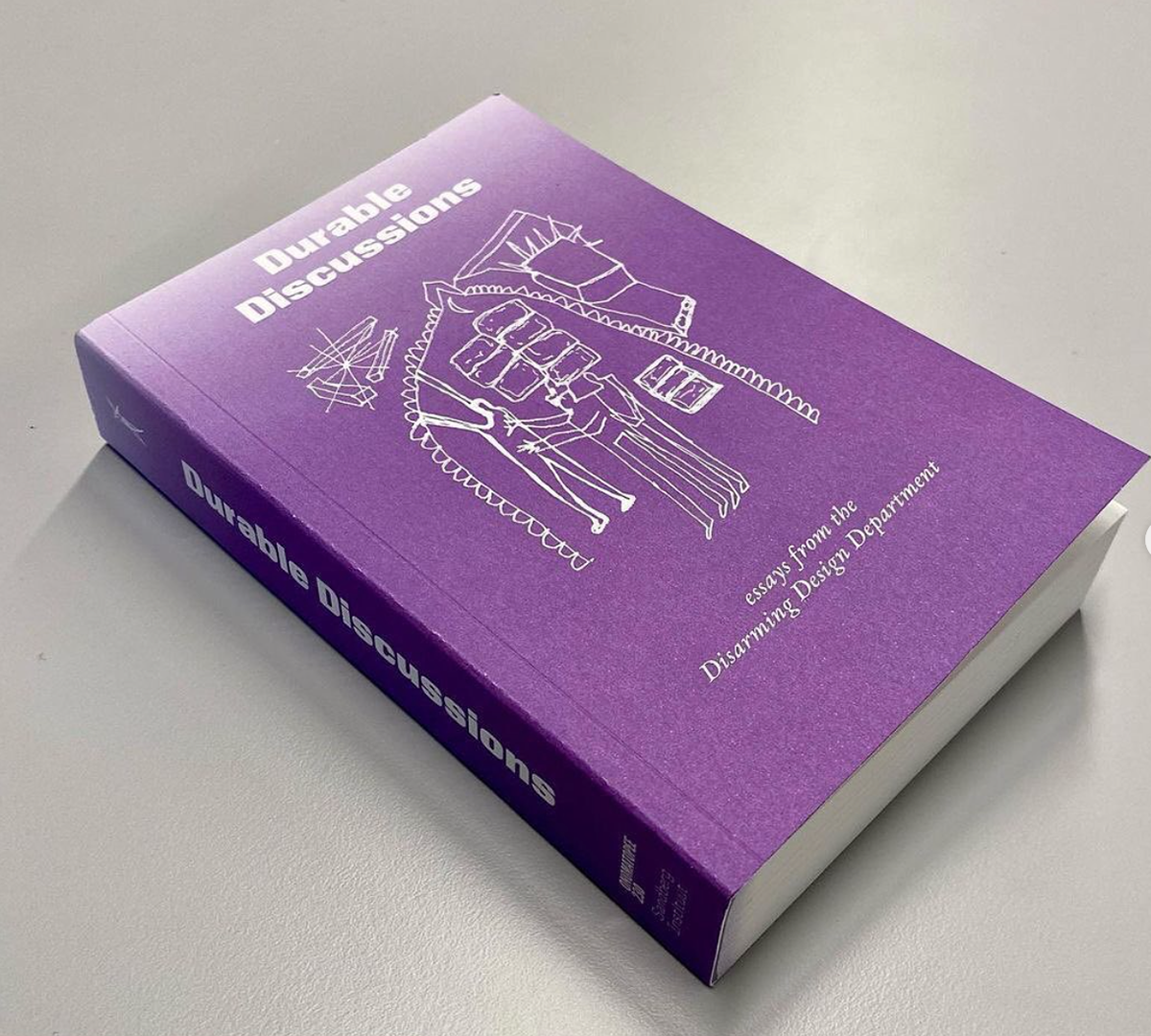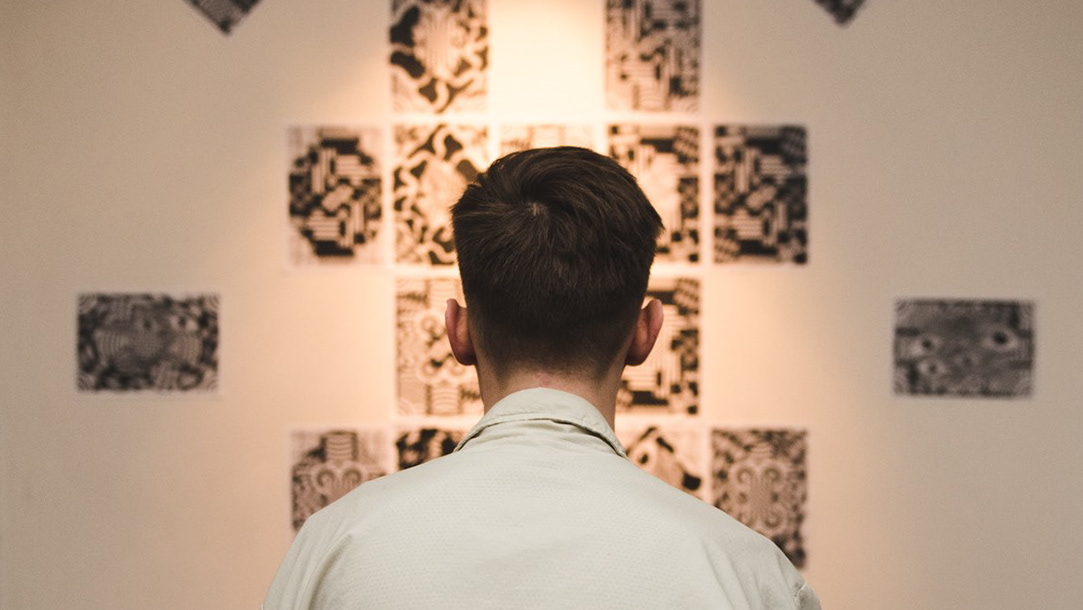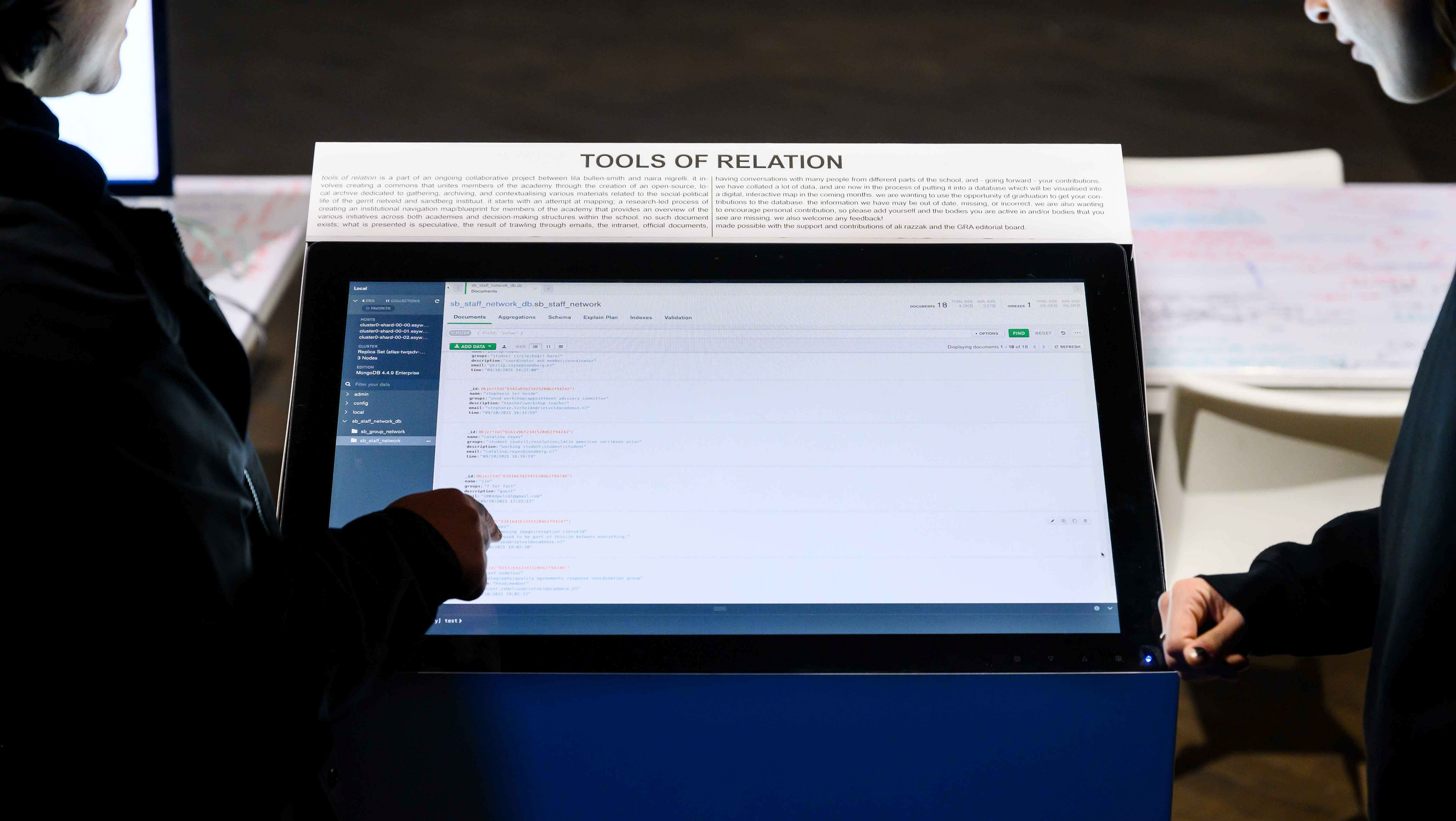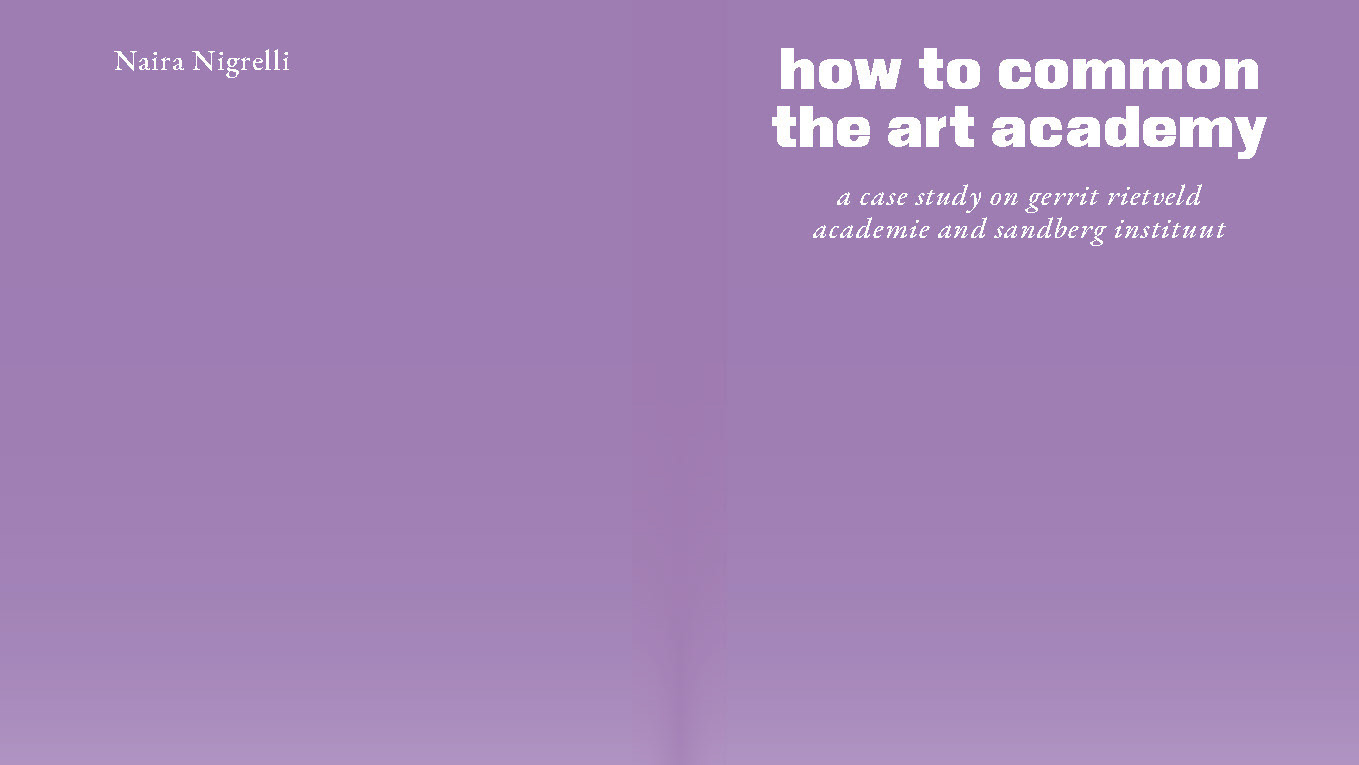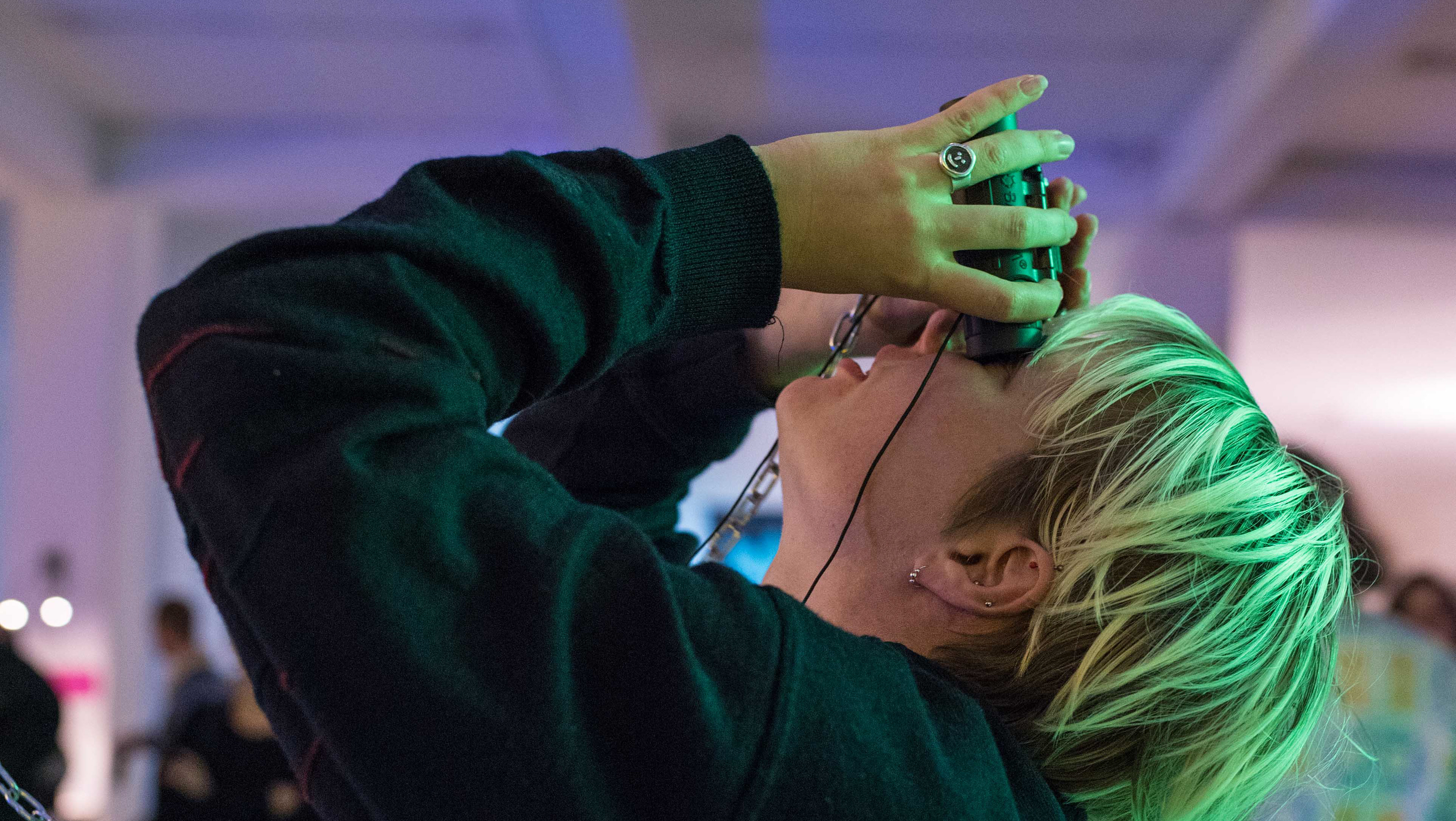Naira is driven by the questions: How well are members of institutions represented in the present conditions of access to informal, cultural lineage? How are the changing (political) narratives within and beyond them relayed to the present and future and how does it affect our artistic development as a whole? In the project ‘self-governing the art academy’ Naira questions how well the students are represented, if their initiatives are not properly archived; as a consequence, how is this affecting art education?
Student Assembly - Montage: Ghenwa Abou Fayad
Dynamic Visualisation - Animation: Ferenc Molnar
Mentorship: Jonas Staal
Gerrit Rietveld Academie, Amsterdam, The Netherlands
June 2022
June 2022
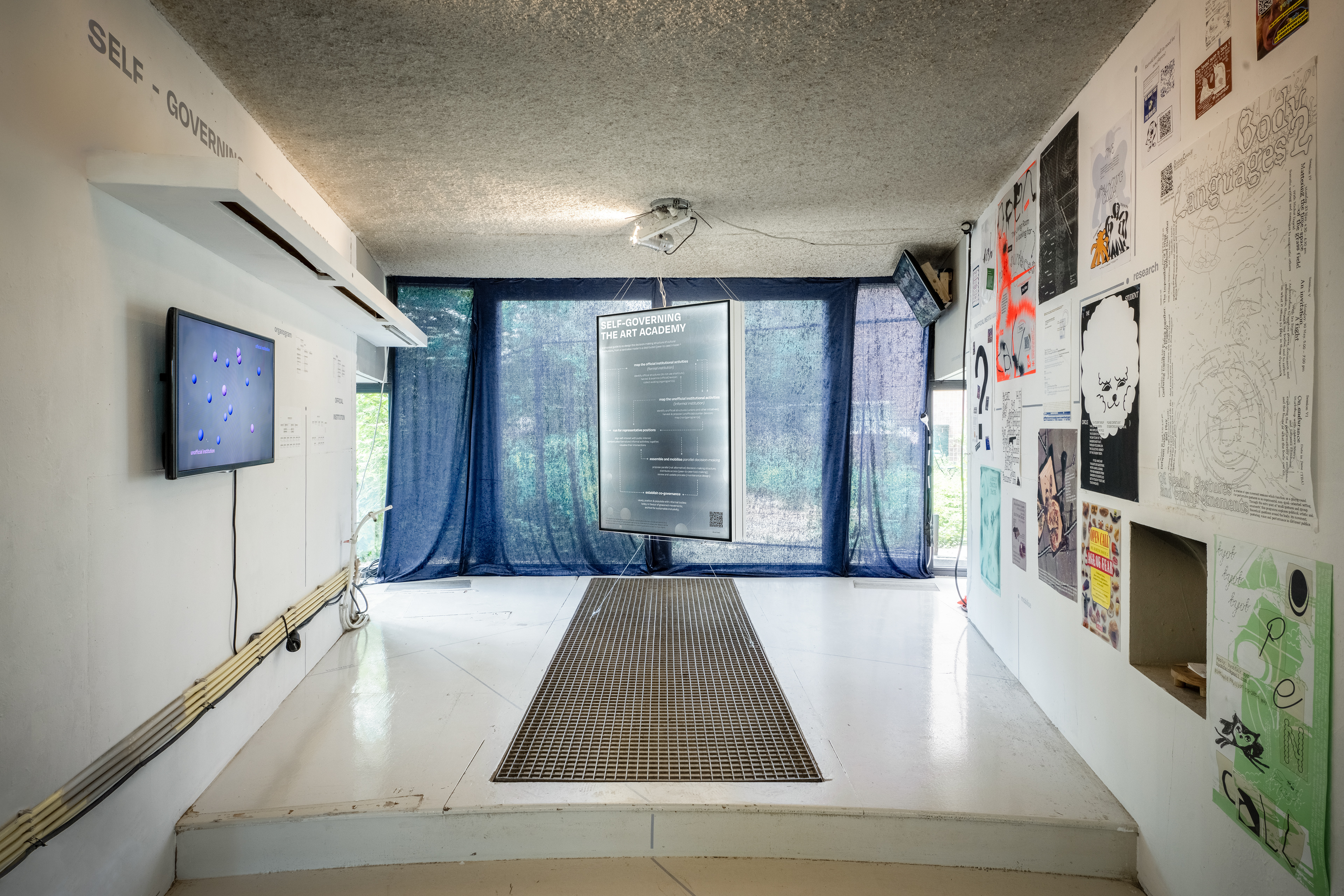
Self-Governing the Art Academie, Graduation Show 2022 - Photo by Sander van Wettum
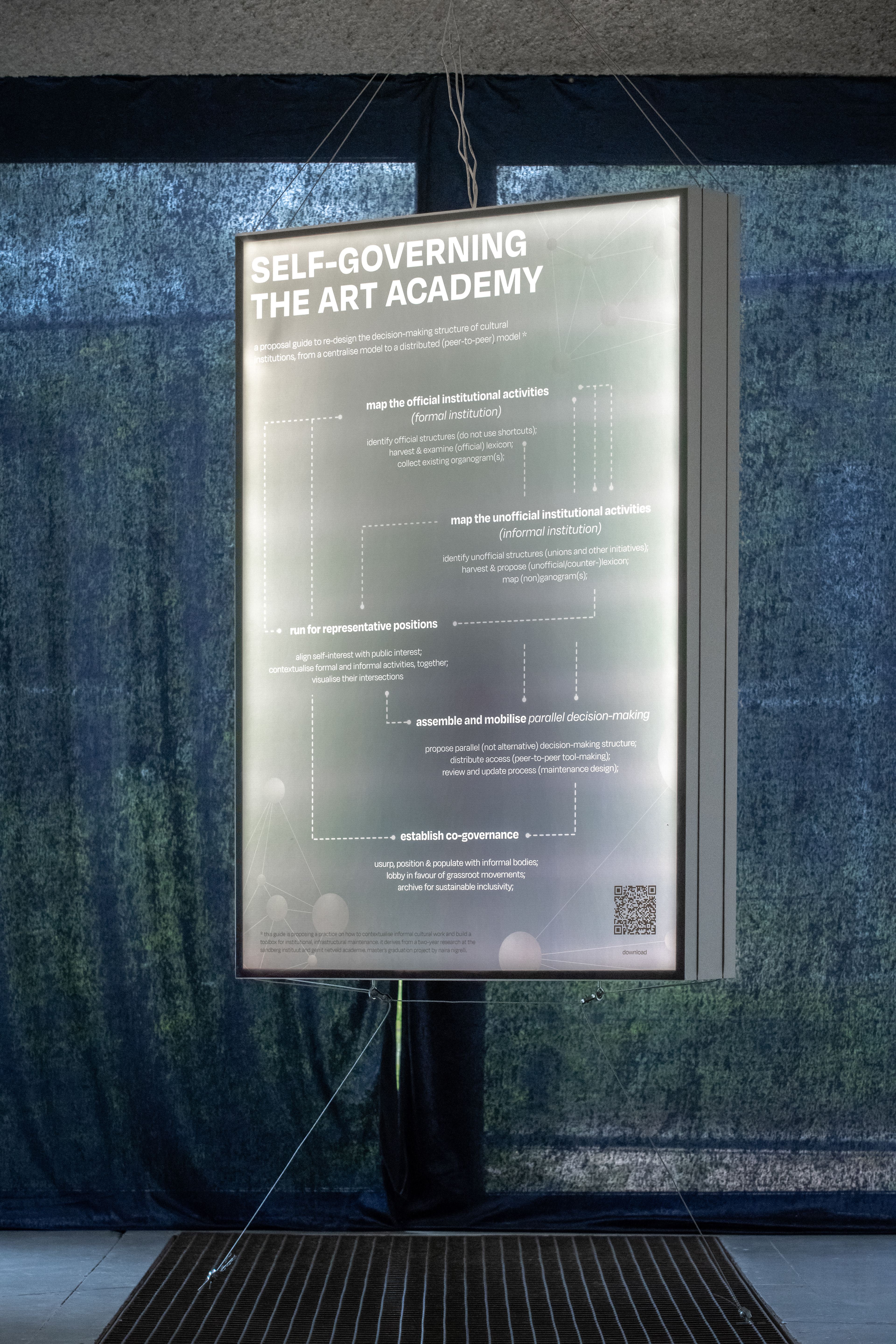
Poster - Photo by Sander van Wettum
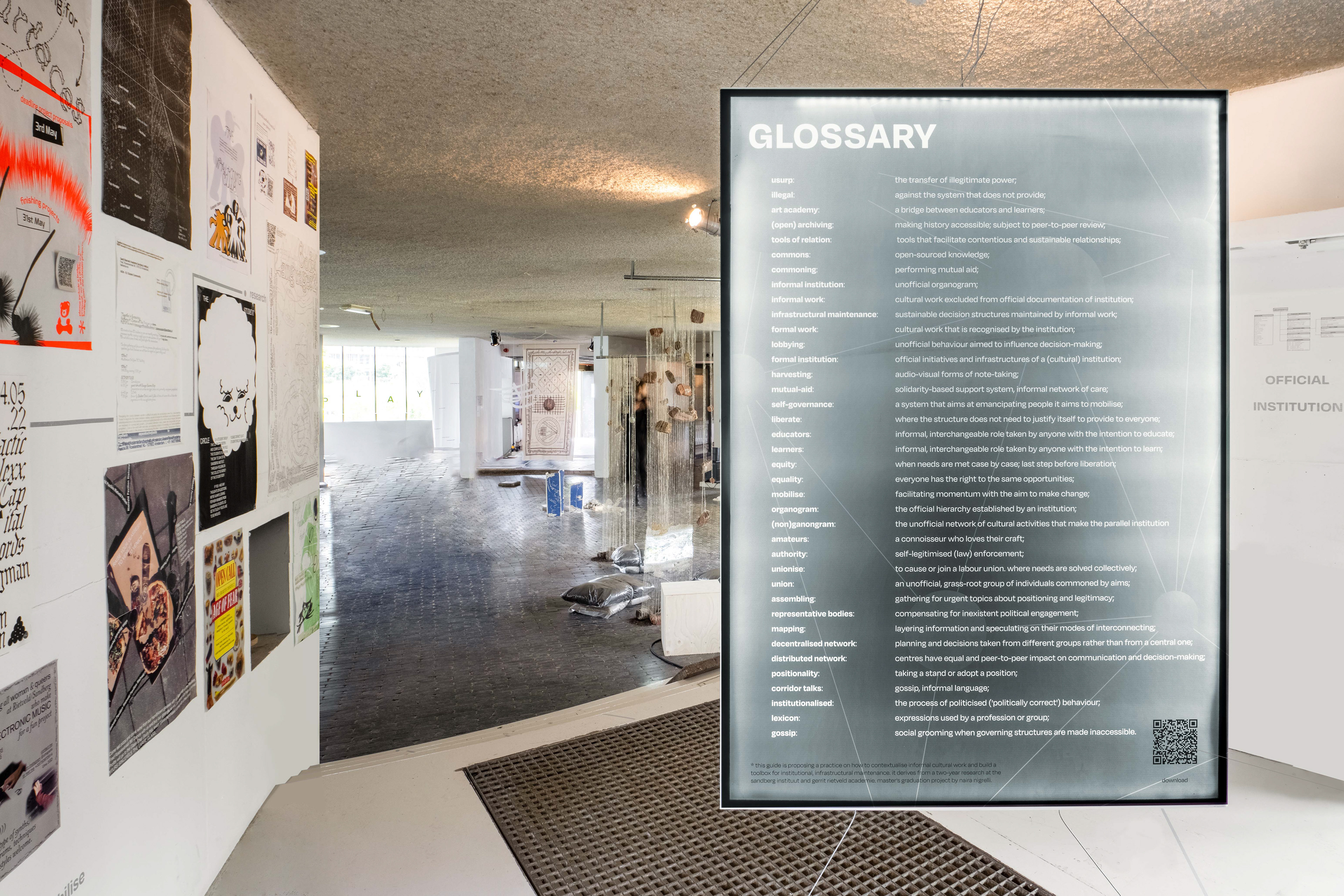
Self-Governing the Art Academie, Graduation Show 2022 - Photo by Sander van Wettum
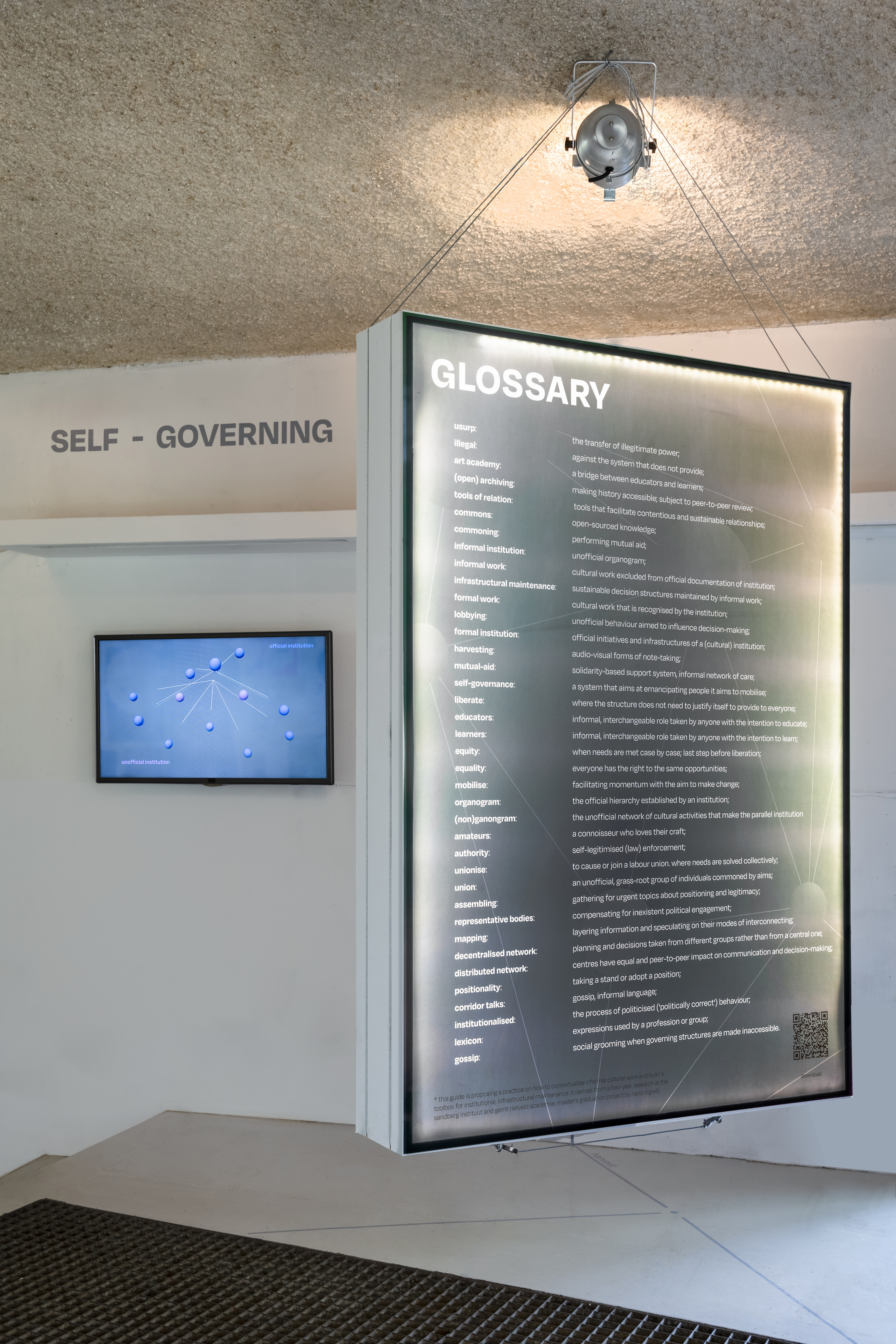
Poster, Glossary of unofficial harvested terms - Photo by Sander van Wettum
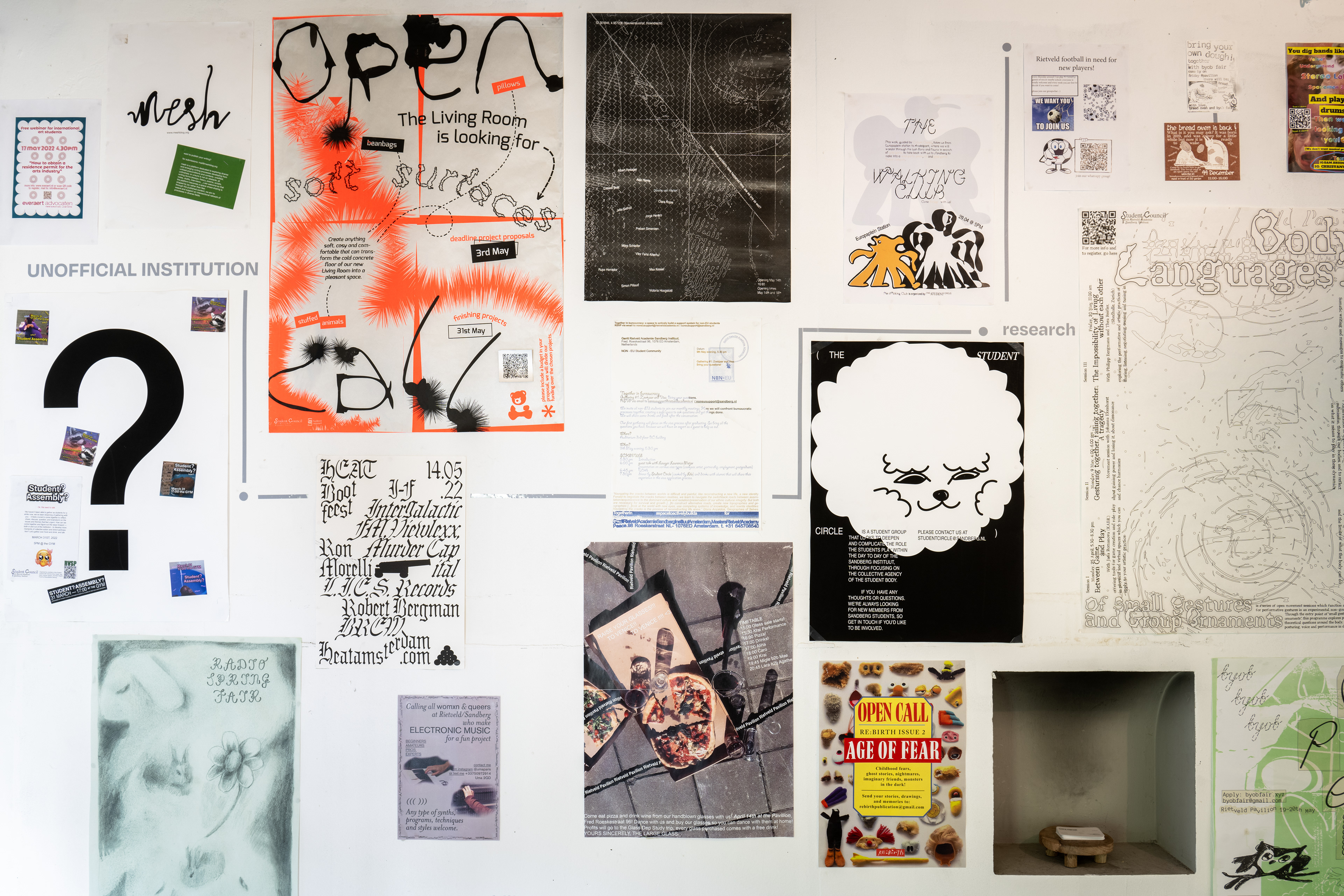
Unofficial institution - Photo by Sander van Wettum
Self-Governing the Art Academy examines how cultural institutions can better represent their members by archiving their
informal lineages making decision-making frameworks more inclusive.
Building on the collaborative project Tools of Relation (2021) with Lila Bullen-Smith, this work arose from my experiences as an art and design student involved in the politics of educational, cultural institutions. Thinking about modes of governance (i.e. how board-members are not democratically elected) critiques the rigidity of academic structures while advocating for legitimised activity. What began as an attempt at mapping the academy’s administrative layers, evolved into an archival practice of “commoning,” aimed at bridging formal and informal institutions. Informal student initiatives—unions, open-letters and other self-led activities such as workshops and assemblies—were often fragmented or inaccessible. This project raised critical questions about ownership, agency, and inclusivity, with the goal of reshaping curricula and governance models to reflect the diversity of its communities. The project fostered dialogue through "corridor talks", helping students gain clarity about governance. While no direct ‘official’ institutional changes resulted, through this work informed my representative roles towards some adjustments to the institutional plan, and the (current) chair’s profile, to include student unions in decision-making processes. Faculty and tutors—including board members, department heads, librarians, and reception managers—were an integral part of my investigation. Interviews and the assembly that arose revealed gaps in institutional clarity, particularly from the quality of student inquiries during the exchanges.
Engaging in administrative work—while unglamorous to many—taught me how to navigate institutional systems and increase my agency in impactful activism. This project reinforced my commitment to bridging action with critique, ensuring institutions adapt to better serve their communities. The “manual for commoning” serves as an open sourced manifesto for any member of cultural institutions of today. It remains accessible to the students in its archives and has the potential to be distributed broadly. Ultimately, I believe, Self-Governing the Art Academy successfully answered the question: Who is the academy, really?
informal lineages making decision-making frameworks more inclusive.
Building on the collaborative project Tools of Relation (2021) with Lila Bullen-Smith, this work arose from my experiences as an art and design student involved in the politics of educational, cultural institutions. Thinking about modes of governance (i.e. how board-members are not democratically elected) critiques the rigidity of academic structures while advocating for legitimised activity. What began as an attempt at mapping the academy’s administrative layers, evolved into an archival practice of “commoning,” aimed at bridging formal and informal institutions. Informal student initiatives—unions, open-letters and other self-led activities such as workshops and assemblies—were often fragmented or inaccessible. This project raised critical questions about ownership, agency, and inclusivity, with the goal of reshaping curricula and governance models to reflect the diversity of its communities. The project fostered dialogue through "corridor talks", helping students gain clarity about governance. While no direct ‘official’ institutional changes resulted, through this work informed my representative roles towards some adjustments to the institutional plan, and the (current) chair’s profile, to include student unions in decision-making processes. Faculty and tutors—including board members, department heads, librarians, and reception managers—were an integral part of my investigation. Interviews and the assembly that arose revealed gaps in institutional clarity, particularly from the quality of student inquiries during the exchanges.
Engaging in administrative work—while unglamorous to many—taught me how to navigate institutional systems and increase my agency in impactful activism. This project reinforced my commitment to bridging action with critique, ensuring institutions adapt to better serve their communities. The “manual for commoning” serves as an open sourced manifesto for any member of cultural institutions of today. It remains accessible to the students in its archives and has the potential to be distributed broadly. Ultimately, I believe, Self-Governing the Art Academy successfully answered the question: Who is the academy, really?
